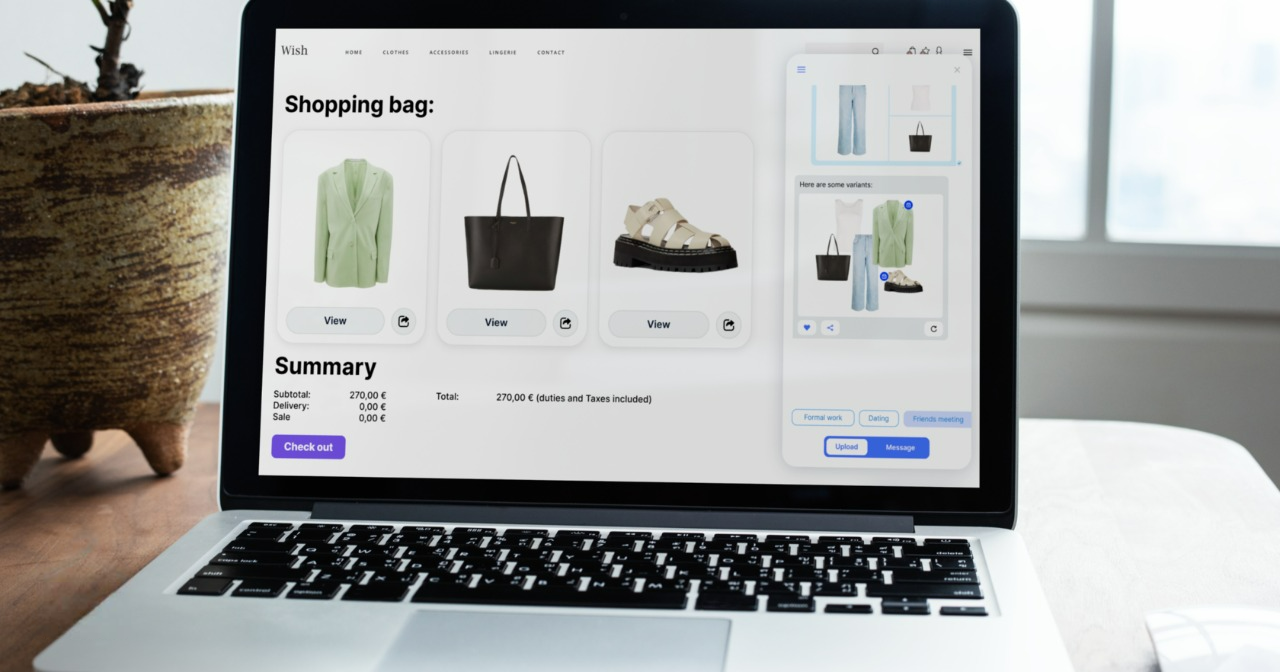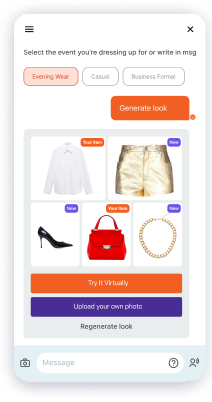
Discover the latest fashion trends with global consumer insights. Explore historical shifts, data analytics impact, and future predictions for sustainable growth.
Discover Vital for 2024 Trends and Statistics for Your Fashion Business Growth
2024 holds a challenging outlook for the fashion industry due to global and climatic crises and socio-political disruptions. This pivotal year is expected to bring about a transformation in the industry. A shift from consumerism towards sensory marketing, brand utility, and aesthetics is anticipated, emphasizing quality, comfort, and sustainability in what is termed as the era of ‘slow fashion’.
Notably, consumer demand for clothing is declining, and brand loyalty is diminishing, with 54% of EU respondents focusing solely on price and product quality, according to KPMG. This necessitates a strategic reevaluation of clothing brands, emphasizing utility and values while embracing innovation.
Looking for new solutions for business growth, we embark on a journey through the multifaceted landscape of the fashion world. Here we’re to unravel key trends and insights that propel and respond to consumer behavior, making brand loyalty grow.
The evolution of the fashion industry
The fashion industry, a dynamic force, has undergone a significant evolution over the years. Here, we delve into the historical perspective and pivotal transformations that have shaped its current landscape.
Fashion, rooted in human history, has evolved from basic attire for protection to a sophisticated industry reflecting societal changes. The Industrial Revolution marked a shift with the introduction of mass production and ready-to-wear clothing.
Traditional fashion involved meticulous craftsmanship, limited styles, and longer production cycles. The emergence of fast fashion in the 1990s revolutionized the industry, emphasizing quick production, affordability, and frequent style turnover. Fast fashion giants like Zara and H&M disrupted traditional models, introducing rapid design-to-market cycles.
Globalization opened avenues for cross-cultural influences, leading to diverse fashion inspirations. Consumers gained access to a wide array of styles from around the world, impacting their preferences and fostering a global fashion consciousness. The interconnectedness of markets facilitated the spread of trends, creating a more dynamic and fast-paced industry.
It becomes evident that these historical shifts set the stage for the current dynamics and challenges the fashion industry faces.
The power of data in the fashion landscape
In the contemporary fashion landscape, data has become a driving force, shaping decisions and strategies. Let's delve into the transformative role of data analytics and its significance in steering the fashion industry.
Data analytics has emerged as a powerful tool, offering valuable insights into consumer behavior, market trends, and operational efficiency. Advanced analytics tools enable fashion businesses to process vast datasets, extracting meaningful patterns and predicting future trends.
Want to see the example?
E-commerce giant Amazon utilizes customer data to solve a set of issues:
- Customizes recommendations based on individual browsing and purchasing history.
- Faster deliveries, improved satisfaction, and reduced operational costs due to data analysis on shipping routes, carrier performance, and customer locations.
- Amazon utilizes big data for dynamic pricing, adjusting prices in real-time based on competitor prices, market trends, and customer demand, while also employing personalized pricing strategies to boost sales, create exclusivity, and enhance customer loyalty.
- Nike's direct-to-consumer success lies in leveraging data for an enhanced customer experience through the Nike app, featuring personalized rewards, early product access, and exclusive workouts.
- Nike, like other brands, gathers customer data through its apps, using these insights to inform design decisions and stock allocation in stores.
With the aid of customer data, encompassing browsing behavior, search history, and purchase patterns, or the information shared in the Dress2Save chat, we acquire insights into our customers' preferences, parameters, and the brands and items present in their wardrobes.
We trust that you are adept at leveraging this data for your business success; however, if not, the Dress2Save solution is poised to handle everything on your behalf.
Navigating the fashion landscape: by the numbers
Current market size and growth projections paint a vivid picture of an industry in constant flux.
According to Amazon statistics, 90% of shopping will be done through e-commerce, relegating offline stores to the background.
A surge of 43% in online spending is forecasted, a significant leap reflecting the evolving shopping habits of consumers. The convenience and accessibility of online platforms redefine the retail landscape.
As the fashion industry grapples with environmental and ethical considerations, statistics shed light on the paradigm shift towards sustainability.
A resounding 70% of consumers express a willingness to pay more for sustainably produced goods. This positive trend signifies a growing alignment between consumer values and purchasing practices.
Navigate these statistics, and you'll uncover not just numbers but a narrative of change, adaptability, and a conscious consumer revolution. The future of fashion is intricately woven into these figures, promising a dynamic and sustainable industry landscape.
Revolutionizing the runway with cutting-edge tech
Today fashion and technology converge, reshaping the industry and elevating the consumer experience.
Fashion's digital fitting room is not a fiction now!
Modern technologies make it possible to step into the realm of augmented reality, where the digital and physical seamlessly intertwine. Augmented reality and virtual try-on experiences redefine the traditional fitting room, allowing consumers to virtually try before they buy.
With a staggering 75% increase in consumer engagement observed through virtual try-ons, this technology becomes a potent tool for brands seeking to enhance the online shopping experience.
Personalized shopping is available with an AI-based virtual assistant!
AI algorithms analyze vast datasets to deliver personalized shopping recommendations tailored to individual preferences. Users like to know they are valued and appreciated, and smart chatbots cope with the task.
With 44% of consumers expressing interest in using chatbots for product information searches, the integration of AI signifies not just a technological leap but a personalized and efficient shopping journey.
What about blockchain technology for transparency in the supply chain?
Peel back the layers of the fashion supply chain and unravel the transparency woven by blockchain technology. From raw materials to the end product, blockchain ensures an unbroken thread of accountability.
In a world where 68% of consumers demand transparency regarding a product's origin, blockchain emerges as the beacon of trust, offering consumers a window into the intricate journey of their fashion choices.
As fashion embraces these technological marvels, the runway transforms into an immersive landscape where innovation and style harmonize. The future of fashion is not merely adorned, it's experienced, appreciated, and understood through the lens of technology.
Navigating fashion's data frontier
As the fashion industry embraces data-driven strategies, it encounters both challenges and exciting opportunities.
The surge in data analytics raises privacy concerns. A recent survey found 62% of consumers worried about how their fashion preferences were utilized. Brands must prioritize transparency to establish ethical data practices.
Amid algorithms and analytics, preserving human creativity is crucial. Consumers (78%) believe human craftsmanship is irreplaceable in fashion. Striking a balance ensures technology enhances, not overshadows, the industry's artistry.
The data-driven landscape presents opportunities for innovation. Brands leveraging consumer insights gain a competitive edge. With a projected 10% annual growth in the data-driven fashion market, sustainable and transparent practices redefine the industry, marking a harmonious blend of technology and creativity.
Peering into fashion's crystal ball
The next decade in the fashion industry holds intriguing possibilities, driven by cutting-edge technologies and evolving consumer dynamics.
AI and machine learning will play pivotal roles in sculpting personalized consumer journeys. The surge in interest in generative AI platforms indicates a potential game-changer, with 44% expressing interest in chatbots for product information.
A transition from impulsive to thoughtful consumption is on the horizon. As approval-seeking behavior dwindles, the focus shifts to quality, comfort, and sustainable choices. Emerging trends indicate a surge in spending on home-related items, hinting at a move towards a more conscious and mindful consumer era.
As we unravel the intricate tapestry of global consumer insights, it becomes evident that the fashion industry stands at the precipice of profound change. From historical shifts to emerging technologies, each facet contributes to the dynamic nature of this ever-evolving sector.
Continuous adaptation and a resolute embrace of data-driven strategies are the keys to sustainable growth. The fashion industry's future hinges on its ability to seamlessly merge the realms of tradition and technology, delivering not just products but experiences that resonate with the conscious, ever-evolving consumer.


